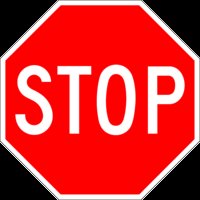To "Stop" or not to "Stop"
 That is a great question. Most of you know I do not use mechanical stop orders. Instead I will keep a mental stop and watch for a close beyond this particular level. Such an example would be CTSH. I did not use a mechanical stop, instead if the stock closed below that new support of $71.50 then I would exit the trade. However, if I had a stop in there it was likely to be triggered intraday...and nothing frustrates me more.
That is a great question. Most of you know I do not use mechanical stop orders. Instead I will keep a mental stop and watch for a close beyond this particular level. Such an example would be CTSH. I did not use a mechanical stop, instead if the stock closed below that new support of $71.50 then I would exit the trade. However, if I had a stop in there it was likely to be triggered intraday...and nothing frustrates me more.This is why I stopped using them. However, there can be a rhyme or reason to using mechanical stop orders. If you choose to use mechanical stops, there are technical indicators you can use to assist you with giving the stock enough breathing room to set a stop and a lower probability of setting it too tight and getting tripped out. Some use time stops, volatility stops, Parabolic SAR, but I am going to teach you how to use an ATR.
The use of this indicator will come after you have completed all your analysis to place a trade. Then the fun begins. “Where do I place my stop order?” Setting a stop order is mandatory if you are interested in limiting your losses, and you must limit your losses to be a successful trader. In determining where to set a stop order, a few questions to ask yourself are, how much are you willing to lose? Where is support? Where is a safe place I can place a stop that will protect me, yet not take me out on a volatile day? I occasionally hear people say that they wish there was a technical indicator that could be used to take out all the guesswork of where to place a stop. Guess what? There already is an indicator that can be used to facilitate this! The indicator is called an Average True Range, or ATR indicator.
J. Welles Wilder introduced this indicator in 1978. The ATR indicator is used to measure a securities volatility, not price direction or duration. It was originally designed for commodities since it takes daily price data into consideration, but can be used for stocks as well. The ATR is most commonly used at a 14 day time period. To see this indicator, go into the Interactive Chart and select it from the “Select Studies” drop down menu. When you add it to your chart it will give you a current reading relative to your stock. Keep in mind that a $20 stock will have a lower ATR reading than let’s say a $100 stock. The idea is to see what the indicator tells you now, and what your extreme high points and low points are. Let’s assume your ATR gives you a reading of 2.0, and a high of 3.5. This means that the stock as of now could fluctuate within a $2 price range. Over time if 3.5 is your highest ATR reading, than historically you can see that even at it’s wildest moment, the stock didn’t swing more than $3.50 during heightened points of volatility. So even if I wanted to use an extreme measure, I could set my stop $3.50 below the stock price and this would be a safe enough place to not trigger my order on a volatile day, yet still protect me from a potential breakout to the downside. You will still want to use support and resistance points to tell you if your stock breaks and one of these points, but an ATR indicator is a great way to set a stop order when you are trying to find where even the most volatile points won’t trigger it.
Play around with it, but ultimately you still are in control of what you risk on a trade. I am not suggesting you use this in place of what you have already been doing, but this might help some identify an easy to use methodology of "how high or low" you set the order above/below support or resistance.








Hi Jeff:
Thanks for all your work. If I apply the ATR on CTSH -stock price of $71.50 less ATR of $2.14, giving me a stop of $69.36-how do I correlate that to % loss on a option premium? Thanks, Susan M.
Posted by Anonymous |
9/18/2006 06:19:00 PM
Anonymous |
9/18/2006 06:19:00 PM
Jeff, You hit a home run with that
lesson.It continually amazes me how
much there is to learn about
options. I feel you are giving us a fighting chance.Thanks for your time.
Steve Lite
Posted by Anonymous |
9/18/2006 06:37:00 PM
Anonymous |
9/18/2006 06:37:00 PM
If I apply the ATR on stock price for a stop. How do I correlate that to % loss on a option premium?
Thanks
Steve W.
Posted by Anonymous |
7/16/2007 07:09:00 PM
Anonymous |
7/16/2007 07:09:00 PM